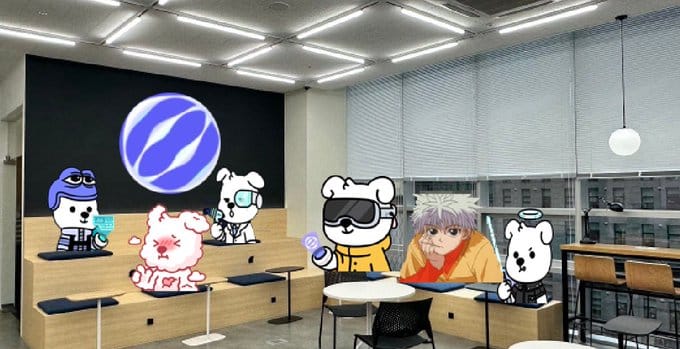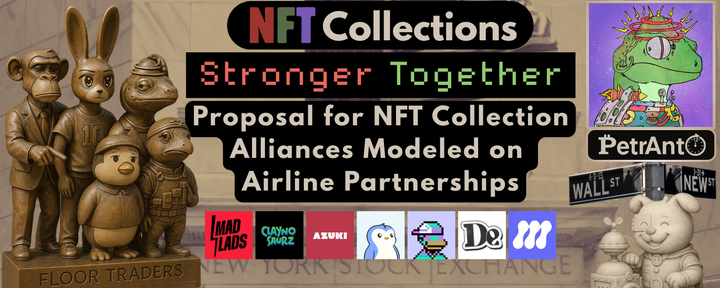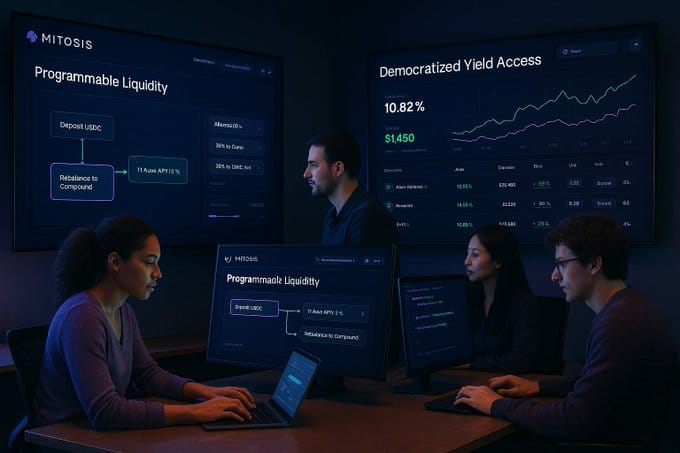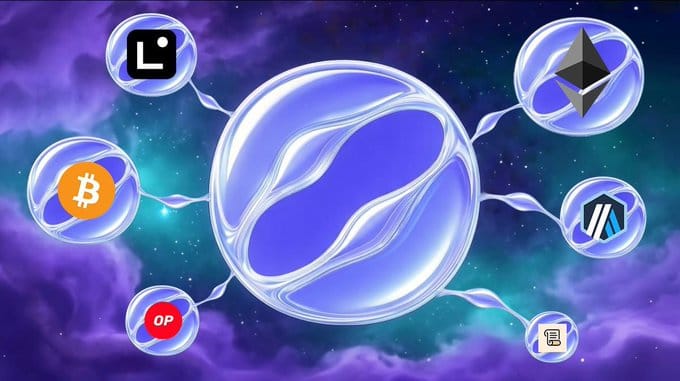DAOs in Education: Building Decentralized Universities in 2025

Degrees measure attendance. Web3 wants to measure contribution. DAOs make that shift real.
Picture this: instead of sitting through four years of lectures to get a piece of paper that maybe gets you an interview, you spend six months building actual products that people use, earning tokens that prove your skills, and getting hired by companies that watched you work. That's not some distant future—it's happening right now in DAO-native education experiments across crypto.
The traditional education model is breaking down in real time. College costs have exploded while job relevance has plummeted. Students rack up debt learning theories that were outdated before they graduated. Meanwhile, the fastest-growing industries—blockchain, AI, remote work—are hiring based on demonstrated ability rather than credentials from institutions that don't even teach these subjects.
DAOs aren't just disrupting education; they're replacing it entirely. And frankly, it's about time.
What Changes with DAO-Native Learning
Learn → Contribute → Earn: Students Become Co-Builders
The old model treats students like passive consumers buying education from expert providers. You pay tuition, attend classes, take tests, and hope the knowledge translates to employment someday. It's a one-way transaction where students are customers, not participants.
DAO education flips this completely. From day one, you're contributing to real projects that matter. Instead of writing papers nobody reads, you're fixing bugs in protocols people actually use. Instead of group projects with imaginary requirements, you're collaborating on bounties with real deadlines and real rewards.
Take Developer DAO's approach: new members start by contributing to open-source projects while learning. They're not just studying smart contract development—they're writing contracts that get deployed, audited, and used. The learning happens through doing, and the doing creates value that gets rewarded immediately.
This creates a completely different mindset. Traditional students ask "what's the minimum effort to pass?" DAO participants ask "how can I create more value?" The incentive alignment is perfect: better contributions lead to better learning, which leads to better opportunities.
Open Curricula: Modules Evolve with the Tech
University curricula change about as fast as glaciers melt. Computer science departments still teach languages nobody uses while completely ignoring blockchain development. Finance programs cover theories that predate DeFi by decades. By the time a university updates its curriculum, the industry has moved on to something else entirely.
DAOs iterate on curriculum in real-time. When a new protocol launches or a paradigm shifts, the learning materials update immediately. Community members who are actually working in these areas create educational content based on current needs, not theoretical frameworks from textbooks written years ago.
BanklessDAO exemplifies this approach. Their educational content responds immediately to market developments. When liquid staking exploded, they had courses available within weeks. When NFT royalties became controversial, they created modules explaining the economics and technical trade-offs. Traditional institutions would have spent two years forming committees to decide whether to consider maybe eventually offering a course.
The modularity is crucial. Instead of rigid degree programs, students combine learning modules based on their goals and interests. Want to focus on DeFi protocol design? Combine smart contract development, tokenomics, and governance modules. Interested in NFT infrastructure? Mix front-end development, metadata standards, and marketplace dynamics. The combinations are endless and constantly evolving.
Onchain Proofs: Skills You Can Verify, Not Just Claim
Anyone can claim they understand blockchain development. Proving it is harder. Traditional credentials rely on institutional reputation—Harvard's brand vouches for their graduates' abilities. But institutional brands can be misleading, and they definitely don't keep up with rapidly evolving technical fields.
Onchain credentials are different. Your contributions are publicly verifiable and permanently recorded. When you complete a bounty, deploy a smart contract, or contribute to governance, the blockchain keeps receipts. Employers can see exactly what you've built, when you built it, and how the community received your work.
This creates unprecedented transparency in skill verification. Instead of trusting that someone learned something in a classroom, you can examine their actual output. Did they write clean, efficient code? Do their protocols handle edge cases well? Have they demonstrated consistency over time? The proof is right there on-chain.
Gitcoin Passport aggregates these proofs into comprehensive skill profiles. Rather than collecting certificates from various institutions, professionals build verified track records of contributions across the entire ecosystem. The credential system becomes meritocratic in ways traditional education never achieved.
How the Model Works
Bounties, Grants, and Project Sprints as Core Learning Units
Traditional education uses artificial assignments designed to test knowledge. DAO education uses real work that creates value. Instead of problem sets, students tackle bounties posted by protocols that need specific features built. Instead of term papers, they write documentation that actual users rely on.
The bounty system creates natural skill progression. Beginners start with small, well-defined tasks like fixing typos or adding test coverage. As they prove competence, they graduate to architectural decisions, protocol design, and leadership roles. The progression is merit-based and visible to the entire community.
Project sprints compress traditional semester timelines into weeks or months. Teams form around specific objectives, work intensively to deliver results, then reassemble for new challenges. The pace matches industry reality rather than academic calendar convenience.
The grant system enables longer-term educational initiatives. Instead of individual students completing assignments, cohorts collaborate on substantial projects that take months to complete. These grants fund both learning and building, creating sustainable educational economics without traditional tuition models.
Governance Steers Topics and Funds
Traditional universities are controlled by administrators who may not understand current industry needs. DAO education is governed by practitioners who are actively working in the field. When the community needs more ZK developers, governance can fund ZK education initiatives immediately.
The governance token holders are typically working professionals who understand exactly what skills are valuable and what knowledge gaps exist. Their voting decisions reflect real market needs rather than theoretical academic interests. This creates curricula that actually prepare students for employment.
Funding allocation through governance creates transparent resource allocation. Community members can see exactly how educational budgets are spent and vote on priorities. If certain educational initiatives aren't producing good outcomes, funding can be redirected quickly rather than waiting for administrative review cycles.
The democratic governance also means students have voice in their educational experience. They can propose new learning tracks, suggest curriculum improvements, and vote on community priorities. This participatory approach creates more engaged learning experiences than top-down educational design.
Reputation Compounds Across Courses and Cohorts
Traditional education resets with each new course. You start every semester back at zero, regardless of previous performance. DAO education builds cumulative reputation that compounds over time and transfers between different learning experiences.
Your reputation score reflects not just what you learned but how you learned it. Did you help other community members? Did you go beyond minimum requirements? Did you identify and fix problems proactively? These behavioral indicators are often more valuable than raw technical skills.
The cross-cohort reputation system creates natural mentorship opportunities. Experienced community members gain reputation for helping newcomers, creating incentives for knowledge transfer and community building. This peer-to-peer education often proves more effective than traditional instructor-student models.
Reputation portability means your learning investments compound across different DAOs and projects. Unlike transcripts that only matter to certain institutions, onchain reputation travels with you throughout your career and across different blockchain ecosystems.
Why This Beats the Old Model
Faster Iteration Than Semester Cycles
The crypto industry moves at internet speed. New protocols launch daily. Paradigms shift monthly. Regulatory environments evolve continuously. Academic institutions literally cannot keep up with this pace of change because their institutional structure prevents rapid curriculum updates.
DAO education iterates weekly. When a new consensus mechanism gains traction, courses appear within days. When a major protocol gets exploited, post-mortems become learning materials immediately. Students learn about developments as they happen rather than reading about them in outdated textbooks years later.
The rapid iteration extends to pedagogical methods. If project-based learning works better than lecture-style education for certain topics, the change can be implemented immediately. If certain assessment methods produce better outcomes, they can be adopted across the entire curriculum without waiting for administrative approval.
Global Access; Funding Follows Outcomes, Not Tuition
Traditional higher education is geographically constrained and economically exclusive. The best institutions are physically located in expensive areas and charge tuition that excludes most of the global population. Even online programs from prestigious institutions maintain artificial scarcity through admission requirements and high costs.
DAO education is globally accessible by default. Geographic location doesn't matter when everything happens online. Economic barriers are reduced because funding comes from value creation rather than upfront tuition payments. Students from anywhere can participate if they're willing to contribute.
The outcome-based funding model means successful students get rewarded rather than punished financially. Instead of accumulating debt to pay for education, students earn tokens by contributing value. The most successful students graduate with assets rather than liabilities.
This economic model creates better incentive alignment. Students are motivated to produce quality work because it directly translates to financial rewards. Educational providers are motivated to create effective programs because successful students generate more value for the entire ecosystem.
Portability: Your Work Is Your Transcript
Traditional transcripts are controlled by institutions and only meaningful within certain contexts. Lose access to your alma mater's records system? Good luck proving your education. Want to transfer credits? Hope the receiving institution recognizes your previous school's legitimacy.
Onchain educational records are permanently accessible and universally verifiable. Your contributions exist on public blockchains that can't be shut down, modified, or lost. Employers anywhere in the world can verify your skills without contacting registrar offices or authentication services.
The portability extends beyond credentials to actual work products. Your portfolio isn't a collection of artificial assignments—it's a track record of real contributions that created value for real users. This portfolio travels with you throughout your career and provides concrete evidence of your capabilities.
Mitosis Angle: Infrastructure for Educational DAOs
EOL/Matrix Treasuries Fund Curricula and Bounties with Yield
Educational DAOs need sustainable funding models that don't depend on traditional tuition or grants. Mitosis's yield-generating protocols can provide continuous funding streams that support educational initiatives without requiring constant fundraising or token emissions.
EOL treasuries can generate yield that funds educational bounties and grants automatically. Instead of periodic fundraising rounds that create funding uncertainty, educational DAOs can rely on predictable yield streams that scale with protocol success. This creates sustainable economics for long-term educational programming.
Matrix campaigns can be structured specifically for educational outcomes. Instead of generic yield farming, Matrix can curate educational initiatives that combine learning objectives with yield generation. Participants learn valuable skills while earning returns, creating win-win educational experiences.
The yield-based funding model aligns educational incentives with broader ecosystem health. When protocols succeed and generate more yield, more funding becomes available for education. This creates positive feedback loops where better education leads to stronger ecosystem development.
mi/maAssets Serve as Proof-of-Contribution and Membership Tiers
Traditional educational institutions use grades and degrees to signal student achievement. These signals are artificial constructs that don't necessarily correlate with real-world value creation. mi/maAssets can provide more meaningful signals based on actual contributions and value creation.
Contribution-based assets reflect real work rather than test performance. Students who build useful tools, write helpful documentation, or contribute to protocol development earn assets that represent tangible value creation. These assets serve as natural membership tiers that unlock advanced educational opportunities.
The composability of mi/maAssets enables sophisticated reputation systems that combine contributions across multiple educational experiences. A student might hold assets representing smart contract development skills, governance participation, and community building expertise. The combination creates nuanced skill profiles that employers can evaluate directly.
Cross-Chain Reach: Students Build Where the Users Are
The multi-chain reality means students need to understand different blockchain ecosystems rather than focusing solely on single chains. Traditional education struggles with this complexity because it requires constantly updating curriculum across multiple rapidly-evolving platforms.
Mitosis's cross-chain infrastructure enables educational DAOs to provide learning experiences across all major blockchain networks. Students can learn Ethereum development while deploying on Solana, understand Cosmos ecosystem while building on Polygon. The infrastructure handles cross-chain complexity while students focus on building skills.
The cross-chain approach also means educational projects can deploy where they'll have the most impact rather than being constrained by the DAO's home chain. A DeFi education module might deploy on the chain with the most active DeFi usage, while an NFT project might choose the chain with the strongest creator economy.
The Path Forward
DAO-based education isn't just a crypto experiment—it's the future of professional development for rapidly-evolving industries. The model will spread beyond blockchain to AI, biotech, and other fields where traditional institutions can't keep pace with innovation.
The key is building sustainable economic models that reward both learning and teaching without requiring traditional institutional overhead. Protocols like Mitosis that can provide this economic infrastructure will enable educational DAOs to scale globally while maintaining quality and accessibility.
The transition won't happen overnight, but it's already accelerating. The professionals who recognize this shift early and build skills through DAO-native education will have significant advantages as the job market continues evolving away from credential-based hiring toward contribution-based assessment.
Conclusion
A decentralized university doesn't issue diplomas—it issues opportunities. The question isn't whether DAO-based education will replace traditional institutions, but how quickly it will happen and who will benefit from the transition.
The infrastructure exists. The economic models are proven. The demand is obvious. What's missing is widespread recognition that the old educational model is already broken and the new model is already working.
Would you rather show a certificate, or a portfolio the market already uses? For anyone building a career in rapidly-evolving fields, the answer is becoming clearer every day. The future belongs to those who can prove their value through contribution rather than just claiming it through credentials.



Comments ()